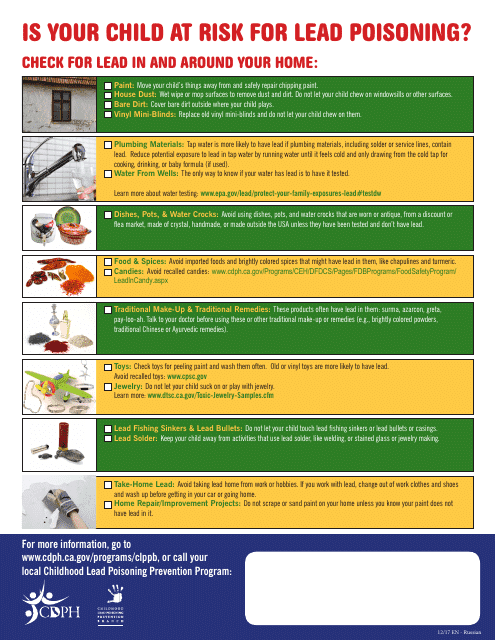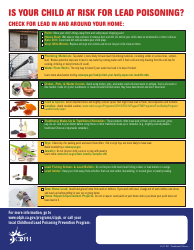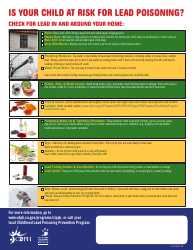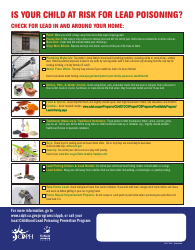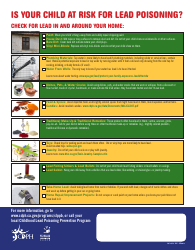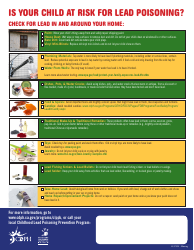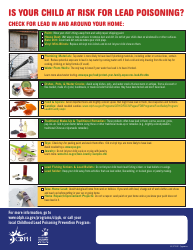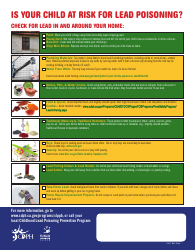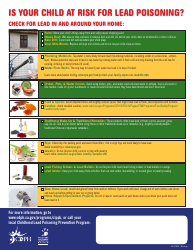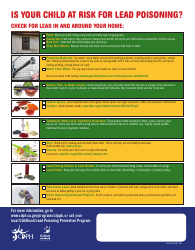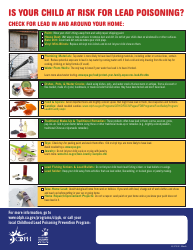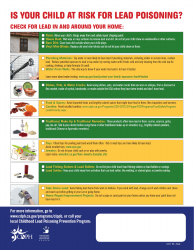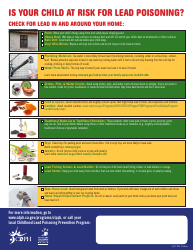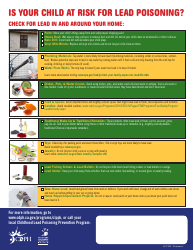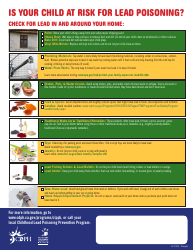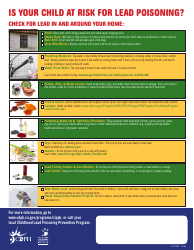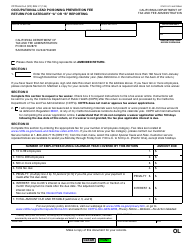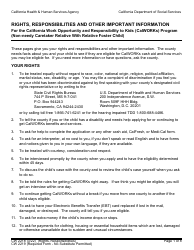Childhood Lead Poisoning Prevention Program Checklist - California (English / Russian)
Childhood Prevention Program Checklist is a legal document that was released by the California Department of Public Health - a government authority operating within California.
FAQ
Q: What is the Childhood Lead PoisoningPrevention Program Checklist?
A: The Childhood Lead Poisoning Prevention Program Checklist is a program aimed at preventing lead poisoning in children.
Q: What is lead poisoning?
A: Lead poisoning occurs when a person ingests or inhales lead, a toxic metal, and it accumulates in their body.
Q: What are the effects of lead poisoning?
A: Lead poisoning can cause a range of health effects, including developmental delays, learning difficulties, behavioral problems, and damage to organs such as the brain and kidneys.
Q: Why is lead poisoning a concern for children?
A: Children are particularly vulnerable to the effects of lead poisoning because their bodies are still developing, and they tend to put objects, including contaminated ones, in their mouths.
Q: What are the sources of lead exposure for children?
A: Common sources of lead exposure include lead-based paint, soil contaminated with lead, dust from lead-based paint, and certain consumer products such as toys and jewelry.
Q: How can lead poisoning be prevented?
A: Lead poisoning can be prevented by identifying and removing sources of lead, ensuring proper maintenance of homes and buildings, and following safe practices when dealing with lead-containing materials.
Q: What is the purpose of the checklist?
A: The checklist is a tool that can be used by parents, caregivers, and healthcare professionals to identify potential sources of lead exposure and take steps to prevent lead poisoning.
Form Details:
- Released on December 1, 2012;
- The latest edition currently provided by the California Department of Public Health;
- Ready to use and print;
- Easy to customize;
- Compatible with most PDF-viewing applications;
- Fill out the form in our online filing application.
Download a printable version of the form by clicking the link below or browse more documents and templates provided by the California Department of Public Health.
